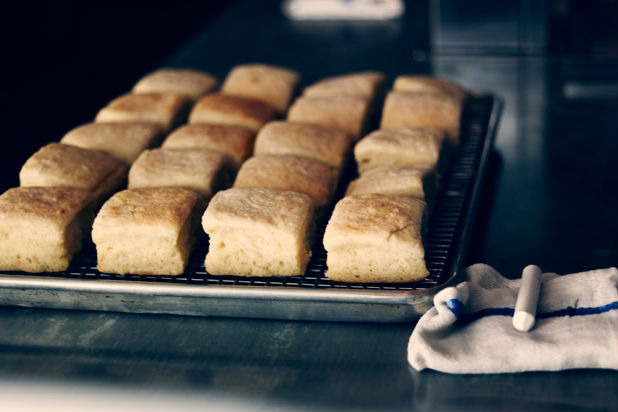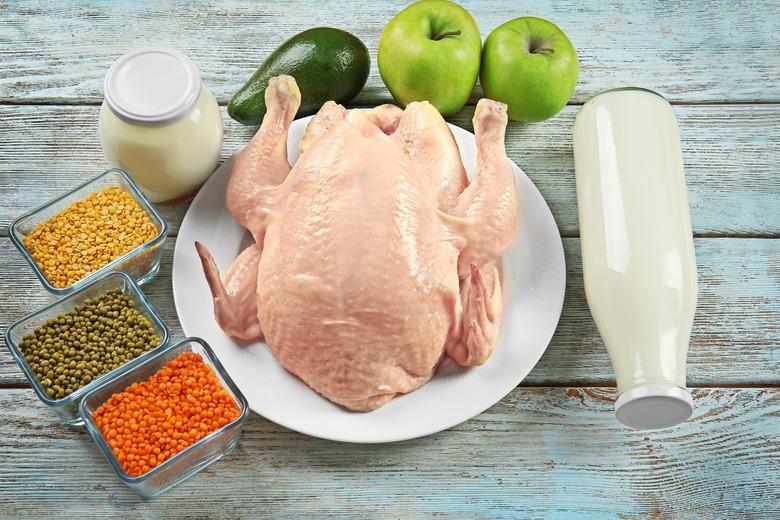Here's How To Finish Off That Last Bit Of Milk
We've all done it. We've all let milk go to waste, letting it depreciate in the fridge until it sours, curdles, and assaults our noses with its caustic aroma when we dare to sniff it in inspection.
It's such a shame, though. It takes a lot of work — on behalf of the earth, the cow, and the farmer — to get that milk to you (with incredible convenience, might we add). And honestly, it's so avoidable! That lingering milk in the bottom of the milk carton deserves a good home, like in buttery scones or flaky biscuits, for instance. To help you with your milk dilemma, we've come up with six ways to use up that list bit of milk before (and after!) it starts to turn.
Don't cry over wasted, unused milk; instead, milk it for all its worth because it would be udderly disappointing if you were to pour perfectly useable milk down the drain.
Save It for Your Coffee or Smoothie
Pour the extra milk into ice cube trays (or into a plastic egg carton) and freeze. Now you can use these milk cubes in place of ice cubes and they won't dilute your beverage.
Bake With It
Did you know you can bake with soured milk? You can use it as you would yogurt, sour cream, or buttermilk. The sourness is not dangerous; instead, think of it as a flavoring agent, as you would any other acid. Find a recipe that would benefit from the acid like scones, biscuits, pancakes, or anything else that calls for baking soda — baking soda reacts with the acid to make baked goods fluffy.
If you are using unpasteurized milk (i.e. raw milk), when it has started to turn you can place it into a new container and let it thicken; it will gain a yogurt-like consistency and have a much stronger flavor than that of buttermilk. Now called a "clabber" (which only safely forms with the bacteria in raw milk), this is what people used to use before baking powder was invented (which doesn't require acid to activate and makes baked goods rise).
For the Buttermilk Pancakes With Blueberries and Maple Syrup recipe, click here.
Add a Little Creaminess
So many different dishes can benefit from a splash of milk. Add some to your soup, sauces, gravies, and even your cocktails. Our favorite way to use up that last bit is to add a glug or two of milk into a hot pot of al dente pasta along with a knob of good butter and cheese to make a light cream sauce. Usually, when you use milk in this way, you don't need a recipe; just go with your gut.
Make Buttermilk
You can make a poor man's version of buttermilk with the help of a little acid. With the ratio of one cup of milk to one tablespoon of lemon juice or vinegar, whisk the milk with the acid and set it aside until it starts to curdle. It may look a little unsavory, but once you take a bite of your homemade buttermilk biscuits, you won't care.
Braise With It
Milk-braising is an inventive Italian cooking technique. As your protein cooks — pork, chicken, beef, lamb, what have you — the heat will make the milk curdle (making it look quite unappetizing, might we add, but have faith). When the meat juice and milk reduces and then emulsifies, you are left with an intensely flavorful cream sauce. The meat will be incredibly moist and infused with just a touch of sweetness.
Make Your Scrambled Eggs Fluffier
You know those buffet-style scrambled eggs? The kind of eggs that are impossibly light and fluffy? Almost cloud-like? Throw a few tablespoons of milk into your scrambled eggs, whisk well, and you too will have buffet-style eggs in the comfort of your own home.






